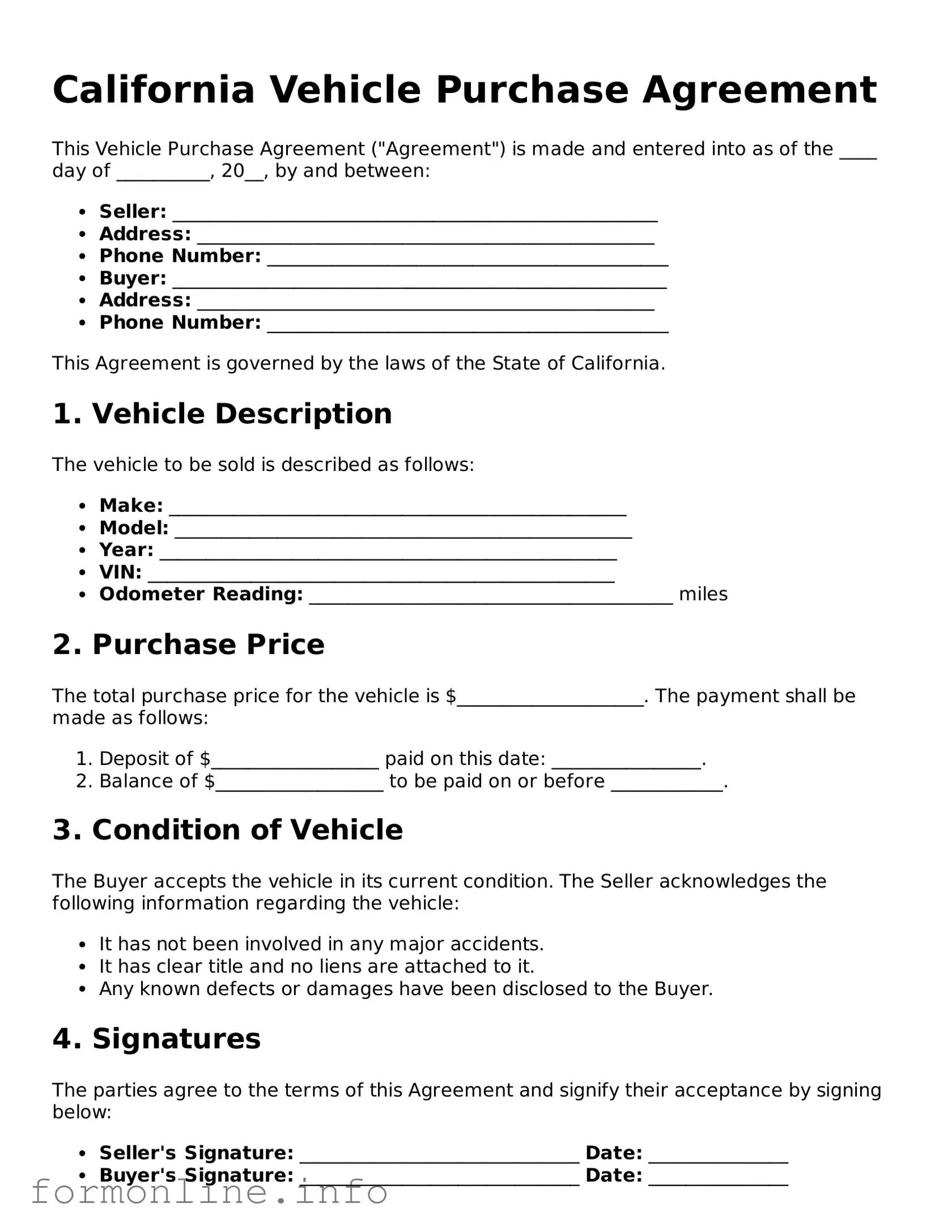The Bill of Sale is a document used in the transfer of ownership of a vehicle. Like the California Vehicle Purchase Agreement, it provides essential details such as the buyer's and seller's information, vehicle identification number (VIN), and the purchase price. Both documents serve as proof of the transaction and are important for registration purposes. However, the Bill of Sale is often simpler and may not include financing terms or warranties, focusing primarily on the transfer of ownership.
The Lease Agreement is another document that shares similarities with the Vehicle Purchase Agreement. While a Vehicle Purchase Agreement outlines the sale of a vehicle, a Lease Agreement details the terms under which a vehicle is rented for a specific period. Both documents include information about the parties involved, the vehicle, and payment terms. However, a Lease Agreement typically includes provisions for mileage limits and maintenance responsibilities, which are not present in a purchase agreement.
The Financing Agreement is closely related to the Vehicle Purchase Agreement, especially when a buyer finances the purchase of a vehicle. This document outlines the terms of the loan, including interest rates, payment schedules, and any collateral involved. Both documents require the buyer's and seller's information and the vehicle's details. However, the Financing Agreement focuses more on the financial aspects of the transaction rather than the actual sale itself.
The Title Transfer Document is essential when ownership of a vehicle changes hands. Similar to the Vehicle Purchase Agreement, it includes details about the buyer, seller, and vehicle. This document is necessary for the new owner to register the vehicle in their name. While the Vehicle Purchase Agreement may serve as proof of the transaction, the Title Transfer Document is the official record that updates the ownership in the state's vehicle registry.
For those involved in vehicle transfers, understanding the necessary documentation is crucial. You can find information about the comprehensive Florida Motor Vehicle Bill of Sale form by visiting this link: comprehensive Florida Motor Vehicle Bill of Sale form, which provides guidance on its use and requirements.
The Odometer Disclosure Statement is another relevant document in vehicle transactions. This statement is often included with the Vehicle Purchase Agreement and serves to disclose the vehicle's mileage at the time of sale. Both documents aim to protect buyers from fraud by ensuring that they are aware of the vehicle's true condition. The Odometer Disclosure Statement is particularly important for compliance with federal and state regulations regarding vehicle sales.
The Purchase Order is a document used in various types of transactions, including vehicle purchases. It outlines the specifics of the order, including the buyer's and seller's information, item description, and payment terms. While it shares similarities with the Vehicle Purchase Agreement in terms of detailing the transaction, the Purchase Order is typically less formal and may not include all the legal protections and warranties found in a Vehicle Purchase Agreement.
